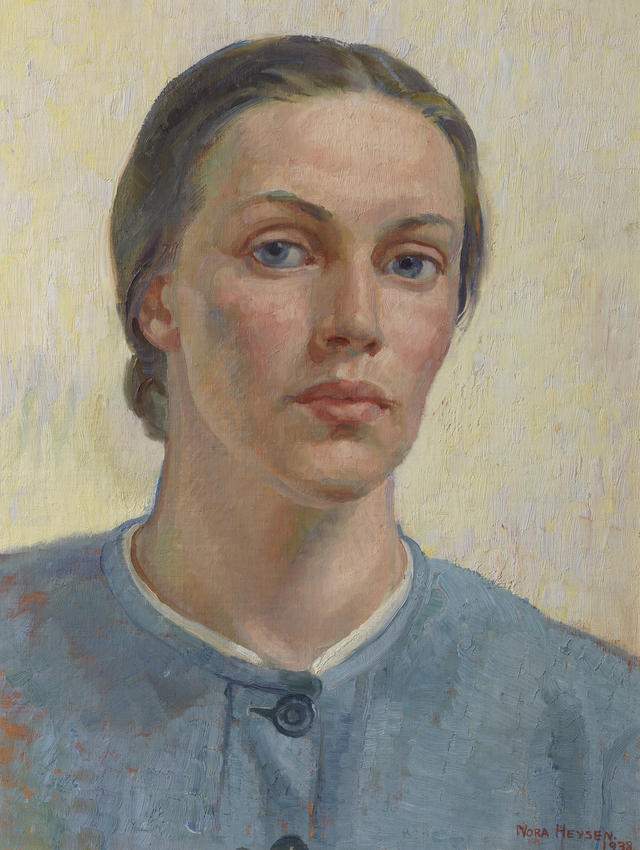We acknowledge the Traditional Owners of the land on which the Queensland Art Gallery | Gallery of Modern Art stands and recognise the creative contribution First Australians make to the art and culture of this country.

Nora Heysen / Australia 1911–2003 / Self portrait 1938 / Oil on canvas laid on board / 58.8 x 48.2 x 4.3cm / Purchased 2011 with funds from Philip Bacon, AM, through the Queensland Art Gallery Foundation / Collection: Queensland Art Gallery | Gallery of Modern Art / © Lou Klepac
Nora HeysenSelf portrait 1938
On Display: QAG, Gallery 4
Returning to Australia from Europe in late 1937, Nora Heysen spent some months at her parents’ home in Hahndorf, South Australia, before relocating to Sydney. Heysen’s works of the late 1930s represent an important moment in her artistic life. The early part of her career was focused on making a name for herself and stepping out from under her father’s, renowned landscape painter Hans Heysen’s, shadow. She decided to paint only portraits and still lifes, while he would paint landscapes.
Self portraits were a direct way for Heysen to establish her identity as an artist. On painting self portraits Heysen said:
I painted myself because I knew her; . . . [Painting self-portraits] is the one time when you can be with yourself absolutely and just paint; you don’t even have to get a likeness. There’s this awful thing called a likeness and portrait painters are always up against it with every commission. It has to look like the person and everyone has a different idea of how a person looks. . .With self-portraits you can be alone with yourself and not have to worry about another person.1
Endnotes:
1. Nora Heysen in David Meagher. ‘Nora Heysen: A cautious gaze’, Australian Financial Review, 10 November 2000, p.14.
Nora Heysen, the daughter of Hans Heysen, studied painting and drawing in London. She met Orovida Pissarro, also an artist’s daughter, who took her to meet her father Lucien, the important English-based post-Impressionist and son of the leading French Impressionist Camille Pissarro. Under the influence of French painting, Heysen began using a more vibrant palette, heightening her colours and experimenting with broken brushstrokes.
Heysen was the first woman to win the Archibald Prize in 1938 for her portrait of Madame Elink Schuurman, the wife of a Dutch diplomat. In 1943, she became the first woman to be appointed as official war artist, serving in New Guinea and recording the women’s war effort. Heyson was appointed a Member of the Order of Australia in 1998 for her service to art.
Discussion Questions
Study closely the many layers and colours that make up Nora Heysen’s face and neck in her Self portrait 1938. What effect does the use of contrasting colours (muted blues and fleshy oranges) and tones (dark and light browns) in close proximity have?
Activities
Audit images of your own face to find the many colours that can be seen on your skin. Experiment by taking photographs of yourself in different lighting conditions. Mix the colours that you notice and record your observations by painting small colour swatches in your journal.